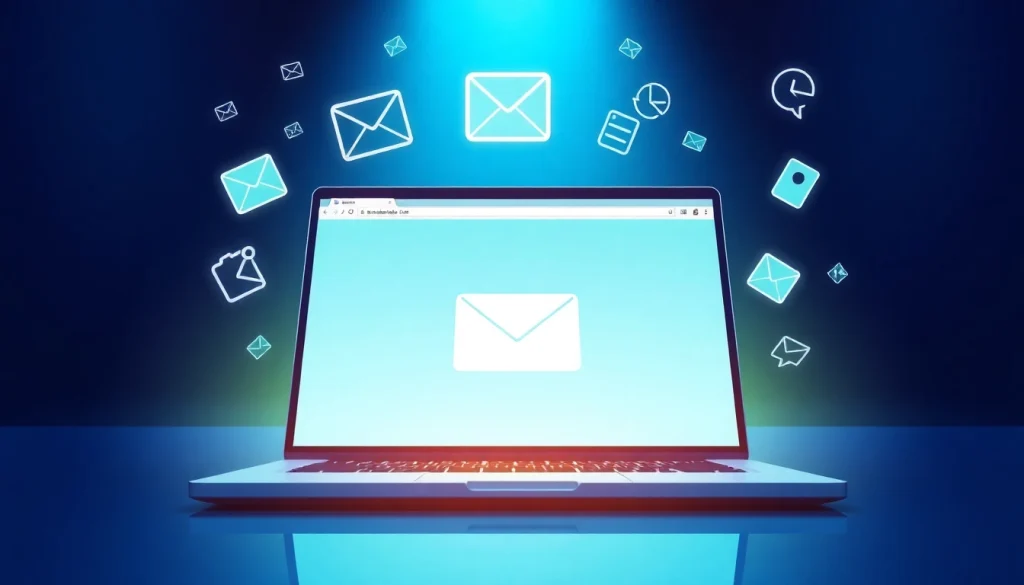How to Use 10 Minute Mail for Secure Temporary Email Needs

Understanding the Basics of 10 Minute Mail
What is 10 Minute Mail?
In today’s digital age, maintaining privacy and avoiding spam has become a crucial aspect of online activities. 10 Minute Mail comes into play as a revolutionary solution for users who seek to keep their primary email address secure and clutter-free. Essentially, 10 Minute Mail is a temporary email service that generates a unique email address that remains active for only ten minutes. This service allows users to send and receive emails without revealing their actual email address.
How Does 10 Minute Mail Work?
The mechanism behind 10 minute mail is quite simple. When a user accesses the service, a random disposable email address is generated automatically. Users can then utilize this address to register for websites, receive verification codes, or access content without the concern of unwarranted promotional emails thereafter. Once the ten minutes elapse, the email address self-destructs, erasing all data associated with it and ensuring that any received messages are permanently deleted.
Advantages of Using Temporary Emails
1. Privacy Protection: By using 10 Minute Mail, users can protect their personal information. It keeps the primary email free from unnecessary exposure during sign-ups and online interactions.
2. Spam Reduction: The temporary email address serves to minimize spam, as users can bypass promotional emails that often come with multiple registrations.
3. Quick Setup: No complicated registration processes are involved. Users can access a temporary email address instantly and start using it without any hassle.
4. Testing and Verification: For developers or tech enthusiasts, testing applications that require email verifications becomes less cumbersome.
Setting Up Your 10 Minute Mail Account
Creating Your Disposable Email Address
Creating a disposable email address through 10 Minute Mail is remarkably straightforward. As soon as you visit the website, the service automatically generates a temporary email for you. Typically, the generated address appears prominently on the site, ready for immediate use. You don’t need to input personal details, making this process efficient and private.
Using the Email Address Effectively
Upon receiving your temporary email address, you can use it immediately for activities requiring an email address, such as signing up for accounts, social media, or newsletters. It’s also efficient for confirming subscriptions or getting access to restricted content that would otherwise require personal email verification. Remember, the reception of emails is immediate, thus enabling real-time verification.
Best Practices for Online Privacy
While using temporary emails enhances privacy, being aware of best practices ensures fuller protection:
- Avoid Sensitive Information: Never send or receive sensitive information like passwords or bank details via temporary email.
- Use Different Addresses: If engaging with multiple platforms, consider generating different temporary email addresses to prevent cross-contamination.
- Be Mindful of Time: Always note the ten-minute time frame; retrieval should happen promptly to ensure you don’t miss crucial information.
Common Uses for 10 Minute Mail
Signing Up for Online Services
One of the primary reasons people use 10 Minute Mail is for signing up for various online services. Whether it’s streaming sites, forums, or other digital platforms that require email verification, utilizing a temporary email helps avoid long-term spam from companies.
Participating in Promotions
Many online promotions and giveaways require users to fill out an email address to participate, which often leads to spam subscriptions. Using 10 minute mail enables users to join in on promotions without subscribing to ongoing email lists, protecting inboxes from unnecessary clutter.
Testing and Development Purposes
For developers or individuals involved in testing applications, services requiring email access can create unnecessary challenges. However, by using temporary emails, you can maintain organized testing environments without real data being exposed, thereby ensuring compliance with privacy norms.
Challenges and Limitations of 10 Minute Mail
Security Concerns and Risks
While 10 Minute Mail provides enhanced privacy, it’s essential to recognize some inherent risks. Since the service is anonymous, it can attract malicious activities. Scammers might utilize temporary emails for spamming, phishing, or other unauthorized activities. Being aware of these limitations is crucial for users who rely heavily on anonymity.
Lifetime of Your Temporary Email Address
The core characteristic of 10 Minute Mail is its short lifespan. While this is advantageous for privacy, it can also be a limitation if users forget to retrieve necessary information before the address expires. Planning ahead and setting reminders can help mitigate this issue.
Situational Limitations
Most online services can accept temporary emails, but certain reputable platforms may ban them to avoid fraud or abuse. In such cases, users may find their access restricted when using temporary email addresses.
Maximizing Your Experience with 10 Minute Mail
Tips for Secure Usage
To fully reap the benefits of using 10 Minute Mail, consider applying the following tips:
- Regular Use: Familiarize yourself with the duration and functionalities to make the most of each use.
- Maintain Records: If necessary, jot down what accounts are linked to specific temporary emails to avoid confusion.
- Educate Yourself: Understand the broader aspects of disposable email address policies when using various online platforms.
Alternative Services to Consider
While 10 Minute Mail is one of the most renowned services, there are several alternatives worth exploring depending on your needs. These include services that offer longer-lasting temporary email, custom domain options, or even group sharing features.
Evaluating the Need for Temporary Emails
Deciding when to use disposable emails requires critical evaluation. It is recommended to reserve temporary email addresses for particular situations such as events where privacy is paramount, or when signing up for services that typically result in spam. Reflecting on the necessity and potential outcome of disclosing an email address can guide effective usage of tools like 10 Minute Mail.




